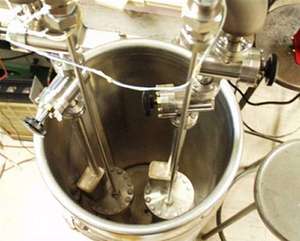On 23 March 1989 Martin Fleischmann of the University of Southampton, UK, and Stanley Pons of the University of Utah, US, announced that they had observed controlled nuclear fusion in a glass jar at room temperature, and - for around a month - the world was under the impression that the world's energy woes had been remedied. But, even as other groups claimed to repeat the pair's results,
sceptical reports began trickle in. An
editorial in
Nature predicted cold fusion to be unfounded. And a US Department of Energy report judged that the experiments did "not provide convincing evidence that useful sources of energy will result from cold fusion."
This hasn't prevented a handful of scientists persevering with cold-fusion research. They stand on the sidelines, diligently getting on with their experiments and, every so often, they wave their arms frantically when they think have made some progress.

|
| ©Unknown
|
